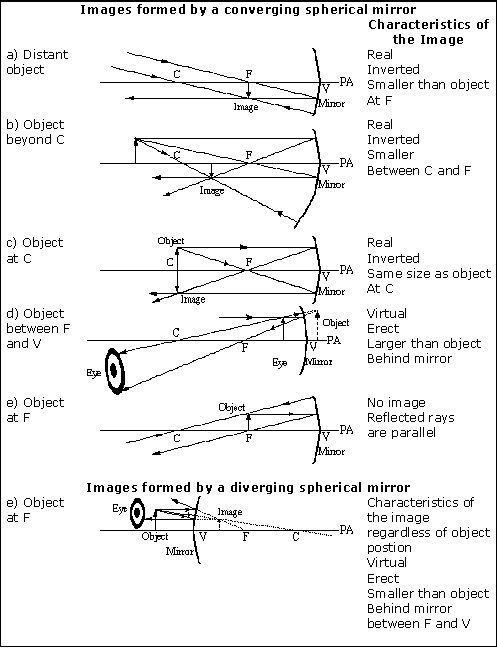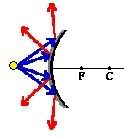Periodic Tests are Over.
THE RAY METHODIt’s just a sort of review because we already did this activity as a part of our lesson.

Fiber optics
Fiber Optic Cable uses very fine strands of plastic and glass to transmit signals of light. Usually, it can only transmit data one way so it contains two strands of fiber, one strand is equal to one path of transmission.
The disadvantage of the fiber optic cable is that it is expensive. It should remain straight because it is very brittle and breaks easily. It is very secure, so the technology we call “wire-tapping” is impossible to happen. It can also transmit signals within miles without any disruption.

If you look closely at a single optical fiber, you will see that it has the following parts:
Core - Thin glass center of the fiber where the light travels
Cladding - Outer optical material surrounding the core that reflects the light back into the core
Buffer coating - Plastic coating that protects the fiber from damage and moisture.
Optical fibers come in two types:
• Single-mode fibers
• Multi-mode fibers
CONCAVE and CONVEX MIRRORS
Terms and Definition:
1. If a concave mirror is thought of as being a slice of a sphere, then there would be a line passing through the center of the sphere and attaching to the mirror in the exact center of the mirror. This line is known as the principal axis.
2. The point in the center of sphere from which the mirror was sliced is known as the center of curvature and is denoted by the letter C in the diagram.
3. The point on the mirror's surface where the principal axis meets the mirror is known as the vertex and is denoted by the letter A in the diagram.
4. Midway between the vertex and the center of curvature is a point known as the focal point; the focal point is denoted by the letter F in the diagram.
5. The distance from the vertex to the center of curvature is known as the radius of curvature (abbreviated by "R").
6. The distance from the mirror to the focal point is known as the focal length (abbreviated by "f").

CONCAVE:
The simpler method relies on two simple rules of reflection for concave mirrors.
They are:
•Any incident ray traveling parallel to the principal axis on the way to the mirror will pass through the focal point upon reflection.
•Any incident ray passing through the focal point on the way to the mirror will travel parallel to the principal axis upon reflection.
CONVEX:

A convex mirror is sometimes referred to as a diverging mirror due to its ability to take light from a point and diverge it. These four rays will each reflect according to the law of reflection. After reflection, the light rays diverge; subsequently they will never intersect on the object side of the mirror. For this reason, convex mirrors produce virtual images which are located somewhere behind the mirror.
Any incident ray traveling parallel to the principal axis on the way to a convex mirror will reflect in a manner that its extension will pass through the focal point.
Any incident ray traveling towards a convex mirror such that its extension passes through the focal point will reflect and travel parallel to the principal axis.
These two rules will be used to construct ray diagrams. A ray diagram is a tool used to determine the location, size, orientation, and type of image formed by a mirror.
Convex Lenses Characteristics:
•Distance from center of lens to focal point = focal length.
•Point is known as focal point.
•Example of a convex lens is a magnifier.
•The thicker the middle of the lens the shorter the focal length.
•Image can be seen without actually looking through the lens. This type of image is known as a real image.
•When held close to objects, inside of its focal length, it produces an image known as a virtual image. To see a virtual image you must look through the lens.
Concave Lenses Characteristics:
•Light rays come apart. It is also known as divergence.
•Always forms a virtual image.
Lens is a device that causes light to either converge and concentrate or to diverge. It is usually formed from a piece of shaped glass or plastic. Analogous devices used with other types of electromagnetic radiation are also called lenses: for instance, a microwave lens can be made from paraffin wax.
Types of lenses:
- Biconvex
- Biconcave
- Plano-convex / Plano-concave
- Concave-Convex
- Meniscus Lens

Uses of lenses
One important use of lenses is as a prosthetic for the correction of visual impairments such as myopia, hyperopia, presbyopia, and astigmatism. See corrective lens, contact lens, eyeglasses.
Another use is in imaging systems such as a monocular, binoculars, telescope, spotting scope, telescopic gun sight, theodolite, microscope, camera (photographic lens) and projector (projection lens). A single convex lens mounted in a frame with a handle or stand is a magnifying glass.
Large convex lenses have been used for hundreds of years to light fires by concentrating sunlight. In this use they are commonly called burning-glasses. Such a lens does not need to be optically accurate to work satisfactorily. A modern variation of this is the use of a lens in combination with a photovoltaic cell to concentrate sunlight and improve the efficiency of the device.
Images by : Netnet of III – Mendel
Xyriz Tan of III – Ptolemy
http://www.albany.edu/~lk9827/523/networking/fiber.html
http://en.wikipedia.org/wiki/Image:Lens2.svg
lured into a deep sleep at Wednesday, August 15, 2007 0 person(s) commented while I sleep
